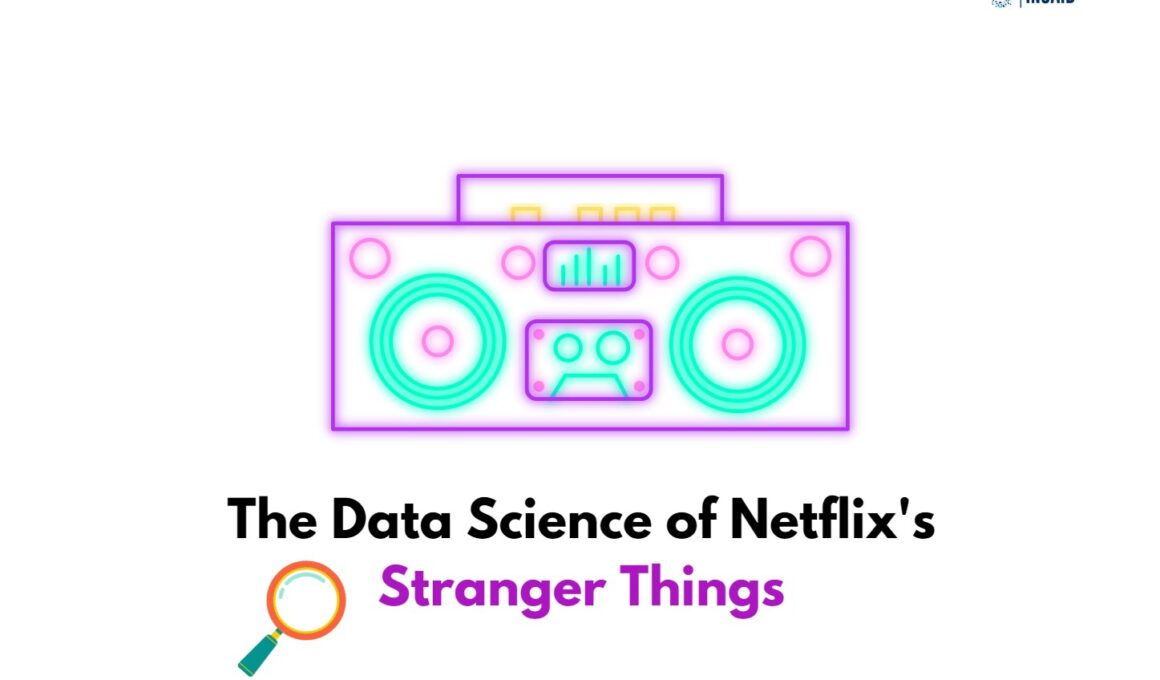As one of the most popular shows on Netflix, Stranger Things has captured the hearts and minds of millions of viewers around the world. But there’s more to this sci-fi hit than just an engrossing storyline and a talented cast of characters.
From a data science perspective, Stranger Things provides a fascinating case study in how to leverage data to drive better decision-making and improve outcomes.
The first season focuses on the disappearance of Will Byers, a young boy who vanishes under mysterious circumstances. As his friends and family search for him, they uncover a sinister government research project and a terrifying alternate dimension known as the Upside Down.
The season builds to a dramatic showdown as the characters come together to battle a monstrous creature from the Upside Down.
The second season continues the story, exploring the aftermath of the events of the first season and introducing new characters and threats. The third season takes place in the summer of 1985, with the characters facing a new supernatural threat as well as the challenges of growing up and navigating romantic relationships.
Stranger Things has been praised for its nostalgic 80s setting, its complex characters, and its blend of horror, science fiction, and coming-of-age drama. The series has been a critical and commercial success, earning multiple Emmy nominations and a devoted fan base.
But did you know that data science also plays a role in this show?
The Data Science of Netflix’s Stranger Things
In this blog, we’ll explore how data science is used in Stranger Things to help the characters solve the mysteries of Upside Down.
1. Pattern Recognition
In Stranger Things, one of the main ways that data science is used is through pattern recognition. The characters use data analysis to identify patterns in various data sets, such as sound waves, electrical signals, and more, to help them understand and track the movements of the monsters from the Upside Down.
For example, in season two, the character Bob Newby, who is a data analyst, uses his skills to analyze data from the Hawkins National Laboratory to identify a pattern in the creatures’ movements. By identifying the pattern, the characters can better predict the creatures’ behavior and movements, which helps them plan their next move.
2. Image Recognition
Another way that data science is used in Stranger Things is through image recognition. In the show, the characters often use photos and video footage to try and identify people and creatures that they encounter.
For example, in season one, the characters use photos of the creature they call the Demogorgon to try and identify it. They use image recognition software to scan the photos and identify any matches in databases of known species.
While this doesn’t provide a perfect match, it helps the characters narrow down their search and better understand the creature they’re dealing with.
3. Predictive Modeling
Finally, data science is used in Stranger Things through predictive modeling. By analyzing data from past events and behavior, the characters can create models that predict what might happen in the future.
For example, in season three, the characters use predictive modeling to try and anticipate the behavior of the Mind Flayer, the main villain of the season. By analyzing data from past attacks and behaviors, they can create a model that predicts where the Mind Flayer might go next and what it might do.
Data science is an essential tool in the fight against the monsters from Upside Down in Stranger Things. By using pattern recognition, image recognition, and predictive modeling, the characters can better understand and predict the behavior of their enemies.
While the use of data science may seem out of place in a show set in the 1980s, it’s a reminder that data analysis has been an important tool for solving complex problems for decades, and it will continue to be so for years to come.
Data science has played a significant role in the success of Stranger Things in several ways, including:
A. Audience Analysis
Netflix, the streaming platform that produces Stranger Things, uses data science to analyze audience viewing patterns, interests, and feedback. This analysis helps them understand what kind of content people like to watch and tailor their content to meet those demands.
B. Recommendation Algorithm
Netflix’s recommendation algorithm is also based on data science, which analyzes viewers’ past watching history, ratings, and other data to suggest content they might enjoy. This helps viewers discover new shows and keeps them engaged with the platform.
C. Marketing
Data science is also used to target marketing efforts for Stranger Things. Netflix analyzes data about viewers’ interests, demographics, and online behavior to create targeted ads and promotions, ensuring that the show reaches the right audience.
D. Production Optimization
Data science is also used to optimize production workflows and reduce costs. For example, by analyzing production data, Netflix can identify areas where they can improve efficiency, reduce waste, and make better use of resources.
Overall, data science has helped Netflix create and promote Stranger Things, ensuring that it reaches a wide audience and stays relevant over time.
 Pin
Pin
Remember to check out our collection of Data Science resources to know more!






